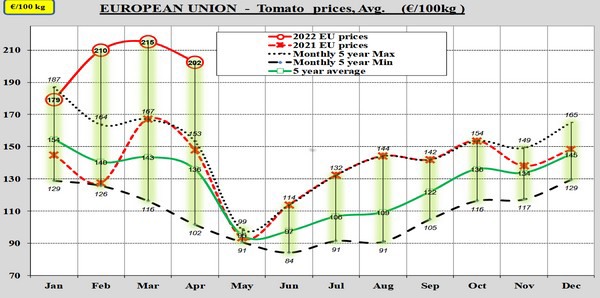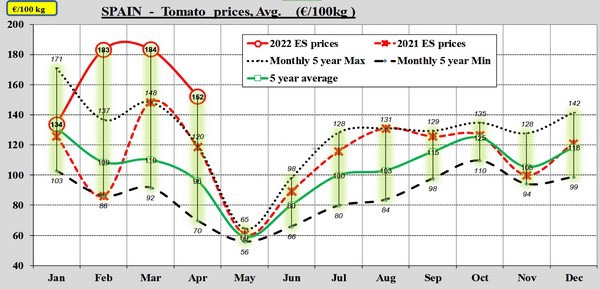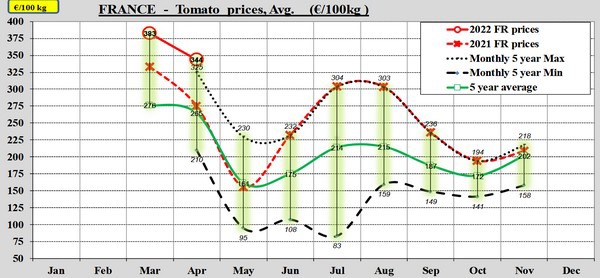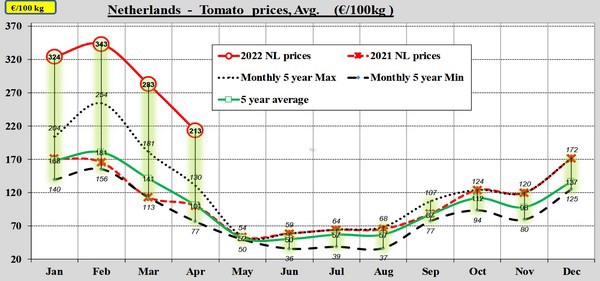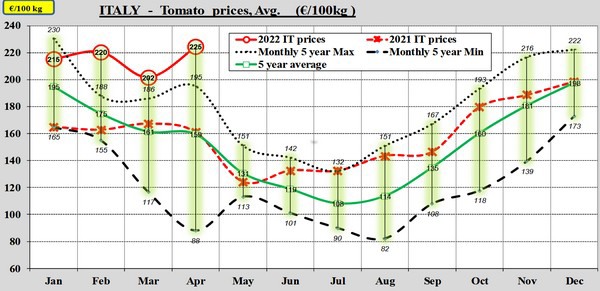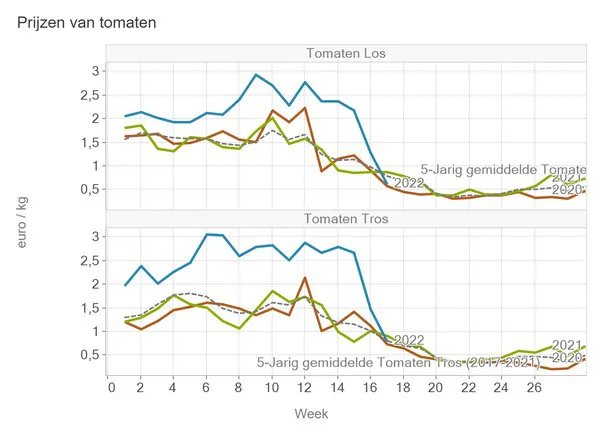As expected, tomato prices fell in April. The decrease was not equally strong everywhere, and in Italy, prices even increased in April, going against the trends. This is shown by the data from the European Commission's tomato dashboard.
However, the main concern in the market is what will happen from now on, as many delayed crops will still come into production. An accumulation of tomato prices, as also described in a recent WUR report, is expected.
Across the board, prices fell by 6% between March and April, one percent more than the five-year average. In the individual countries shown on the dashboard, the differences are bigger.
In Spain and France, prices fell more than average between March and April. In Spain, this means a kilo price of 1.52 euro on average, the lowest price of all countries. However, the price is still well above the five-year maximum and, therefore, above the average over the past five years.
This is also the case in France, although the kilo price of 3.44 on average is flirting with the five-year maximum in April of 3.25 euros. In both Spain and France, prices often bottom out in May.
In The Netherlands, prices often drop sharply towards the summer. According to the dashboard, a kilo yielded an average of 2.13 euros in April. In the past five years, prices fell by an average of 28% between March and April. This year, the drop was 'only' 25%. Still, the prices are more than twice as high as usual.
In Italy, prices rose in April. This is not entirely unusual there, although the past five years have also seen a huge low in April. On average, the price drops by 1% between March and April. This year the price rose by 11% to end up at an average kilo price of 2.25 euros.
Belgium is not included in the dashboard, but through the figures of the Federation of Belgian Horticultural Cooperatives, the price development of tomatoes can be followed. In week 17, the last week of April, prices briefly dipped below the five-year averages.
What now, now that volumes are building up?
In the coming weeks, we will have to wait and see how the market deals with increasing volumes. Growers will hope that the above-average prices that have lasted almost the entire year will maintain. This way, they can hopefully compensate for the equally extreme costs.
At the same time, the high prices could also have a negative impact if it turns out that consumers are abandoning the 'expensive' tomatoes because they can no longer afford them as a result of, among other things, rising inflation. A problem that, by the way, is particularly threatening next winter, when costs will remain high, and there will again be far fewer lit crops. But we are not there yet. Let's first see what happens this summer.

